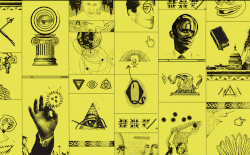A fake news survival guide: How to identify misinformation, disinformation, and conspiracy theories

As the 2020 US presidential election approaches, President Donald Trump is spreading disinformation about Black Lives Matter, Joe Biden, and Kenosha, Wisconsin. Hours after Biden announced Kamala Harris as his presidential running mate, conspiracy theories as well as racist and sexist misinformation began to spread online. Twitter is tightening its rules against voting misinformation, vowing to take down or label more types of misleading election claims. Facebook is finally cracking down on QAnon and banning other conspiracy theories.
All that is to say: It’s a good time to brush up on your media literacy, and Seattle-based librarian Di Zhang is here to help. During the 2016 election cycle, Zhang says on this Today, Explained episode, people started coming into the Seattle Public Library asking questions about suspicious stories that would pop up on social media and in the news that sounded sensational and weren’t sure whether the stories were credible. “We put our skills to the test and we decided to create this class called the Fake News Survival Guide.”
The term “fake news” took off in 2015 when news outlets reported on the prevalence of fake online articles. These fake articles gained steam to the point that during the 2016 election cycle, fake news articles were shared more often on Facebook than real ones. Zhang points out that while disinformation, misinformation, and conspiracy theories aren’t new, “they’re gaining more and more traction, and … these social media platforms are pushing people toward more and more extreme content.”
In this episode, Zhang will give you tips you can use — and share with your friends and family — on how to tell if a story you come across on social media is real or fake. Learn more about the difference between misinformation and disinformation here.
Below is an edited version of the transcript. You can listen to the full Today, Explained episode here. Subscribe to Today, Explained wherever you listen to podcasts, including Apple Podcasts, Google Podcasts, and Spotify.
Sean Rameswaram
What tips do you give people to not just combat fake news they find online, but the stuff in, you know, chats and emails and text chains and all that stuff?
Di Zhang
I give three quick tips. Number one, read, listen, and watch critically before sharing. Number two, check the source. Number three, check the support.
Sean Rameswaram
Okay, three essential tips. Engage very critically with what you’re reading. Check sources and then check supports, like, who’s being quoted where, where the information is coming from, etc.
Di Zhang
Exactly. They did a study in 2016 that revealed 59 percent of Twitter links were shared without clicking through. People were encountering these headlines that really grabbed them emotionally, and they felt like they had to share with all their followers or their friends. And they actually didn’t read the article. So the best thing we can do is to actually click through, read it in full, ask ourselves, “Does this make sense? Has a fact-checking website done a report on this story?”
Sean Rameswaram
What are some fact-checking sites for people out there who aren’t familiar?
Di Zhang
For political content, I really like PolitiFact, but my all-time favorite is Snopes. They have a long history of debunking myths, you know, conspiracy theories, even gossip. And what I love about Snopes is they show all their homework. Just like any good journalist or fact-checking website would, they lay out the claim, they rate it, but then they show you exactly where this story came from, what’s the support behind it, whether there is any support. So they really show you every step that they took to rate this claim.
Sean Rameswaram
So that’s how to engage a little more critically. What about checking the source? How do regular people who are just reading the news casually on Facebook, of all places, check sources?
Di Zhang
The key is to not engage on Facebook. It’s to actually go to where is the article hosted. Who has written the article? What do you know about this author? Have they written other articles? If they don’t [have an author listed], that could be a red flag. And if they do list the author, oftentimes they’ll give kind of a bio of where the author has worked and other publications they’ve written for and what other articles they’ve posted. Where did this journalist get training? Who have they worked for? Who is the publisher? Do they have an established reputation? Did they, you know, just show up in the last few years, or are they an established news organization? Follow the trail of bread crumbs and follow where the information is coming from.
Sean Rameswaram
And then the third tip you give people is to check the support for the article. What does that mean?
Di Zhang
What I mean by support is, what evidence do they give? Oftentimes they’ll quote an expert. And in that case, you can check who is this person? Are they authoritative? Do they actually have a degree? And if they’re listing quotes, like, for example, from a press conference, can you actually find video or a transcript of that press conference? Did this person actually say that? We really have to create a culture of conscious consumption, skeptical consumption, and skeptical sharing.
Sean Rameswaram
Are there red flags that can make this easier? Other things that people could look out for that are sort of signs that you might be encountering some disinformation online?
Di Zhang
Some red flags would be the headline is very sensational or politically charged. It may use caps or excessive punctuation. The language might be extreme or opinionated. If it’s super easy to share, if it’s designed for easy sharing, such as a meme, I’m super, super skeptical of memes and I almost never share them. And just because it’s just an image and anybody could have created it, it’s almost impossible to trace where it began. And another thing I talk about is a .co domain.
.co’s are newer to the game. They’ve been around for only about 10 years. It’s a lot easier and a lot cheaper to get a .co domain. I use the example of abcnews.com.co, which was one of the biggest fake news websites in 2016. This website was masquerading as ABC News.
And finally, if it contains a claim that it has a secret, the media, the government, big business, whatever doesn’t want you to know about and that they’re the only one who has access to this information, that is a big red flag. And it essentially is them saying, “You can’t fact-check me.” You know, “No one else has this, and you should trust me.”
Help keep Vox free for all
Millions turn to Vox each month to understand what’s happening in the news, from the coronavirus crisis to a racial reckoning to what is, quite possibly, the most consequential presidential election of our lifetimes. Our mission has never been more vital than it is in this moment: to empower you through understanding. But our distinctive brand of explanatory journalism takes resources. Even when the economy and the news advertising market recovers, your support will be a critical part of sustaining our resource-intensive work. If you have already contributed, thank you. If you haven’t, please consider helping everyone make sense of an increasingly chaotic world: Contribute today from as little as $3.
*** This article has been archived for your research. The original version from Vox.com can be found here ***


